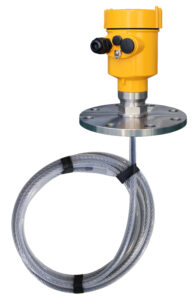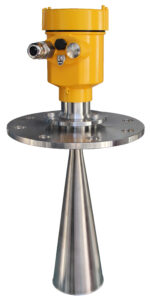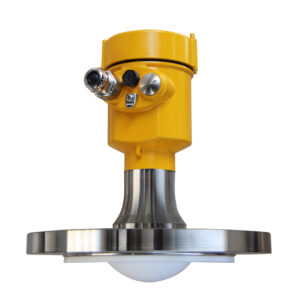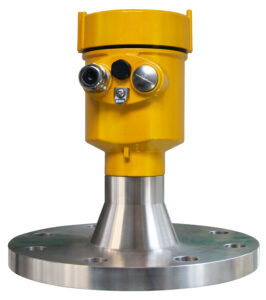A radar level meter is widely used in metallurgy, building materials, energy, petrochemical, water conservancy, food, and other industries. It is a high-tech product that uses microwave technology to detect the level of materials, the level meter uses the microwave has good penetration, the harsh environment and strong adaptability to the measured materials, etc., using the world’s advanced large-scale integrated circuit, using the radar principle, digital signal processing technology, and fast Fourier transforms (FFT) technology. It can measure liquid, and solid (lump, powder) material levels, with long-range and high accuracy.
1. Investigation method
Use your sense of sight, smell, and touch. In some cases, damaged components will be discolored, blistered, or show burnt patches; burnt equipment will emit a particular smell; short-circuited chips will be hot, and a dummy or desoldered area can be investigated with the naked eye.
2. Tapping method
When the radar level meter is found to be running badly, the majority of this situation is due to poor touch or false soldering. On this condition can be used to knock and hand pressure method. The so-called “knocking” that is, the possible onset of fault parts, through the small rubber hammer or another knocking object gently hit the plug-in board or parts, to see if it will cause errors or shutdown problems.
The so-called “hand pressure” that is, in the event of a problem, turns off the power to the socket components and plugs with firm hand pressure and then turns on the machine to try to eliminate the problem. If you find that hitting the case is normal, and then hitting it again is not normal, it is best to reinsert all the connectors and try again.
3. Replacement method
Request two instruments of the same type with sufficient spare parts. Replace a good spare with the same element from the defective machine and see if the problem is eliminated.
4. Exclusion method
The so-called elimination method is a way to determine the cause of the problem by unplugging some plug-in boards or devices in the machine. When a plug-in board or device is removed and its appearance returns to normal, it is clear that the problem is there.
5. Lifting and cooling method
Sometimes when the exterior of the device is operated for a longer period of time, or when the operating temperature is high in summer, the problem will appear, and it will be normal to turn off the device, then normal to turn it on again after a period of time, and then the problem will appear again after a while. This phenomenon is because of the poor function of a single IC or meta-equipment, high-temperature characteristics parameters can not reach the target requirements caused by. In order to find the fault factors metal processing network, can be used to raise and lower the temperature method.
The so-called cooling, that is, when the problem is presented, with cotton fiber will be anhydrous alcohol in the possible parts of the problem wipe, so that it’s cooling, to investigate whether the problem is eliminated. The so-called warming that artificially raises the ambient temperature, such as with a soldering iron put near the part of doubt (note that the temperature must not be too high resulting in damage to normal equipment) to try to see if the problem is present.
6. Comparative method
Two intelligent radar level meters of the same type are required for the exterior, and one is in normal operation. This method also requires the necessary equipment, such as multimeters, oscilloscopes, etc. The nature of the comparison is voltage comparison, waveform comparison, static impedance comparison, output results comparison, current comparison, etc.
The specific method is: to let the defective appearance and the normal appearance in the same condition of operation, and then check some points of the signal and then compare the two groups of signals measured, if there is a difference, then we can determine the fault here. This approach requires that the repairer has the appropriate knowledge and skills.
7. Shoulder riding method
The shoulder-riding method is also known as the parallel method. Put a good IC chip on top of the chip to be checked, or put a good meta-device (resistor, capacitor, diode, transistor, etc.) in parallel with the meta-device to be checked, check the touch, if the problem comes from the internal open circuit or poor touch of the device and other factors, then this method can be used to eliminate.
8. Isolation method
The fault isolation method does not require the same type of equipment or spare parts for comparison and is safe and reliable. According to the flow chart of the fault inspection, cutting around gradually narrowing the scope of the fault search parts exchange, etc., and then cooperating with the signal comparison, part of the method usually will quickly find the fault.
9. Capacitive bypass method
When an odd situation occurs in a circuit, such as a display disorder, a capacitive bypass method can be used to determine the circuit that is approximately at fault.
10. Condition Adjustment Method
Generally speaking, before the fault is determined, do not pull the meta-equipment in the circuit at will, especially adjustable equipment, such as potentiometers, etc.. However, if you have adopted a reference method beforehand (e.g. by marking the position or measuring the voltage or resistance value before pulling it), it is still permissible to pull it if necessary. Perhaps the problem will sometimes be eliminated after the change.
The power and ground terminals of the IC, for transistor circuits connected across the base input or collector output, are investigated for their effect on the fault scenario. If the capacitor bypass input is ineffective and the fault disappears when bypassing its output, it is concluded that the fault is present at this level of the circuit.









